The New York City Marathon is the biggest and probably most famous Marathon in the world. Over 50,000 participants each year race the 42.2 km or 26.2 miles through all 5 boroughs of the big apple. I had the chance to run in with my Dad on November 5th 2017, who finished his first Marathon at the age of 69.
Travel & Accessibility
Getting into the New York City Marathon is quite complicated, but not impossible. There are in general 5 ways to get a spot
- Run a fast qualifying time
- Win a spot in the ballot
- Run for Charity
- Run the 9 qualifying races with New York Road Runners
- Book a spot with a travel agency (international only)
Unfortunately the price for the New York City Marathon is very high. It ranges from 350$ to 550€. Once you have a spot you need to get to New York City, which is fairly easy. Immigration to the U.S. is what it is, and depending on where you are from you might need a visa to enter into the US.
Bib Pick-Up and Expo
The race expo is located in a convention center on the Hudson river and can be accessed from various NYC subways. Bib Pick-up is smooth and easy, and the queues were not long at all. The expo itself is one of the biggest ones I have seen so far. There you can buy everything you potentially need, but do not get tempted to try it on race day.
Pre-Race
The by far worst bit of the Marathon is getting to the start line. There are two options to get to the start on Staten Island: either the buses from the New York Public Library in Mid Town Manhattan or the Ferry from the south end of Manhattan. (not counting the option for the bus from Jersey City). Both options are complicated and take ages. In option a you first have to queue for around 30 minutes around the New York Public Library to get onto the buses (start lining up at the south west corner).

On our way to New York City Marathon
Then you are stuck for around 2 hours in traffic before the buses can drop you off. In the second option you have to first take the subway, then take the ferry, and then take the bus to the start line area. Whichever you take: it will be a long time, so make sure you get up early and take a nap on the bus.
Once you get to the start area you have to wait again. There are 4 start waves, from around 9 to 11. So you might have to take your bus at 6. a.m., arrive at the start at 8 a.m., but then have to wait until 11 a.m.

New York City Marathon Start Line Area in Staten Island
There are a lot of facilities in the 3 different start areas (green, orange and blue areas to make the long wait a bit more bearable: free coffee, bagels, water, drinks), but make sure you bring a blanket to sit on and some warm clothes. As the waiting area is mostly outside make sure you also bring a rain coat in case of rain. We were quite lucky because it was still dry and we could just sit on the lawn, but be prepared for the worst. But make sure you check the Marathon website to see which items are allowed in the start area.

My friends and me before New York City Marathon
For each start runners would be asked to get into their individual corrals to get ready. Don’t worry, you can’t miss it as there are constant announcements in 5 different languages that remind you when waves and bag drops close. And to my big surprise there were lots and lots of porta potties in the corrals. This was the first marathon where I only had to wait for 2 minutes maximum.
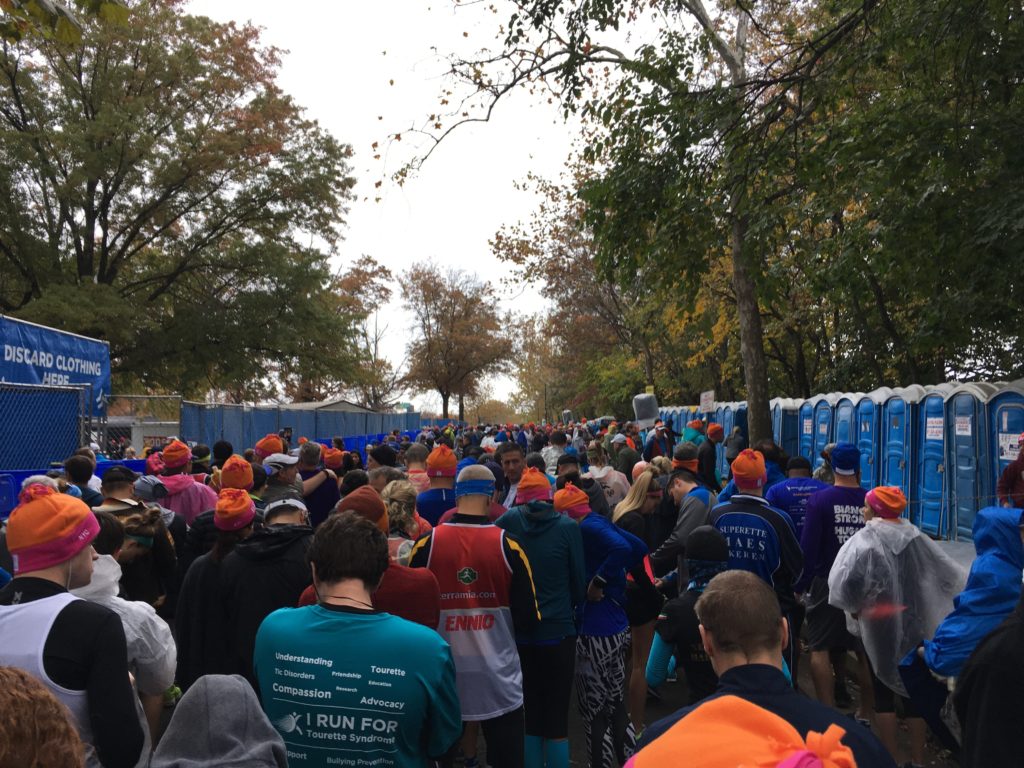
The Corrals and the Porta Potties of New York City Marathon
A few minutes before the start the corrals open and you walk another 200m to the actual start line on the Verrazano-Narrows bridge.
New York City Marathon course
The New York City Marathon Marathon course is famous for the fact that it goes through all the 5 boroughs. It starts at Staten Island in the south of New York City, then crosses the Verrazano-Narrows bridge into Brooklyn.

The first few meters of New York City Marathon
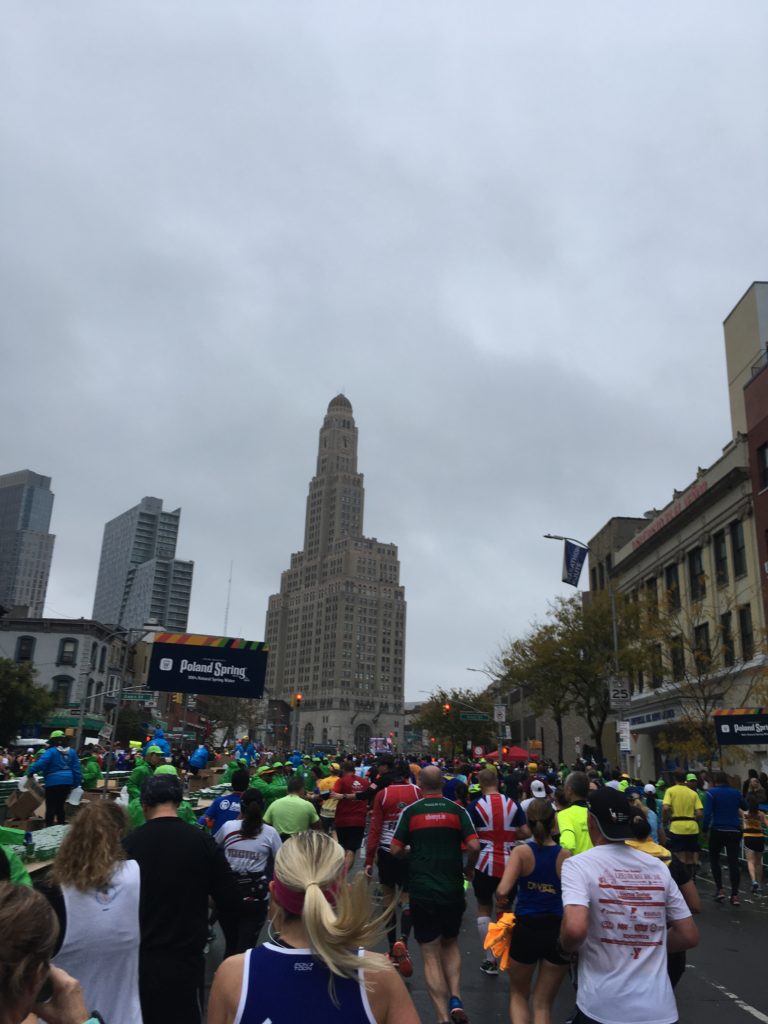
the route of New York City Marathon in Brooklyn
After heading north all the way through Brooklyn and the hip area of Williamsburg into Queens it crosses back into Manhattan. This is probably one of the most spectacular moments of the whole marathon. On the bridge it is quite quiet, you can only hear the runner’s footsteps and the occasional train passing above. But then you descend onto First Avenue in Manhattan, and then the crowds hit you. So many people cheering for you at the same time is just spectacular.
But it is important that you do not get caught up in the spirit of that area. You are just 26 km into the race and the hardest bit is still to come.
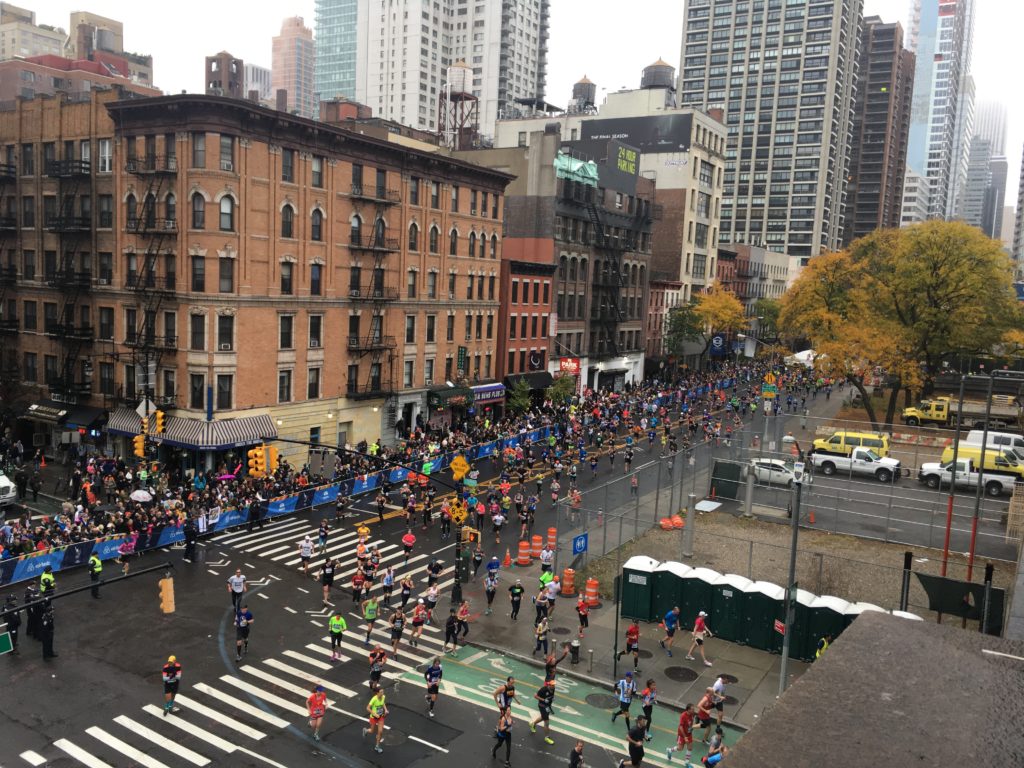
Turning onto First Avenue
You then run up First Avenue until you arrive in the Bronx. After a short while you cross the final bridge and turn into Fifth Avenue again. This marks the last and probably hardest 7km the stretch of 5th avenue along Central park is mostly uphill, and at this point it will absolutely hurt in your legs. Then you turn right into Central Park, where you encounter several rolling hills, that are absolutely grueling. But the crowds there will cheer you on like crazy. The final stretch along 59th street is also up hill, but you are nearly there yet. One final right turn to the finish line with it’s amazing crowds and the different flags right and left.
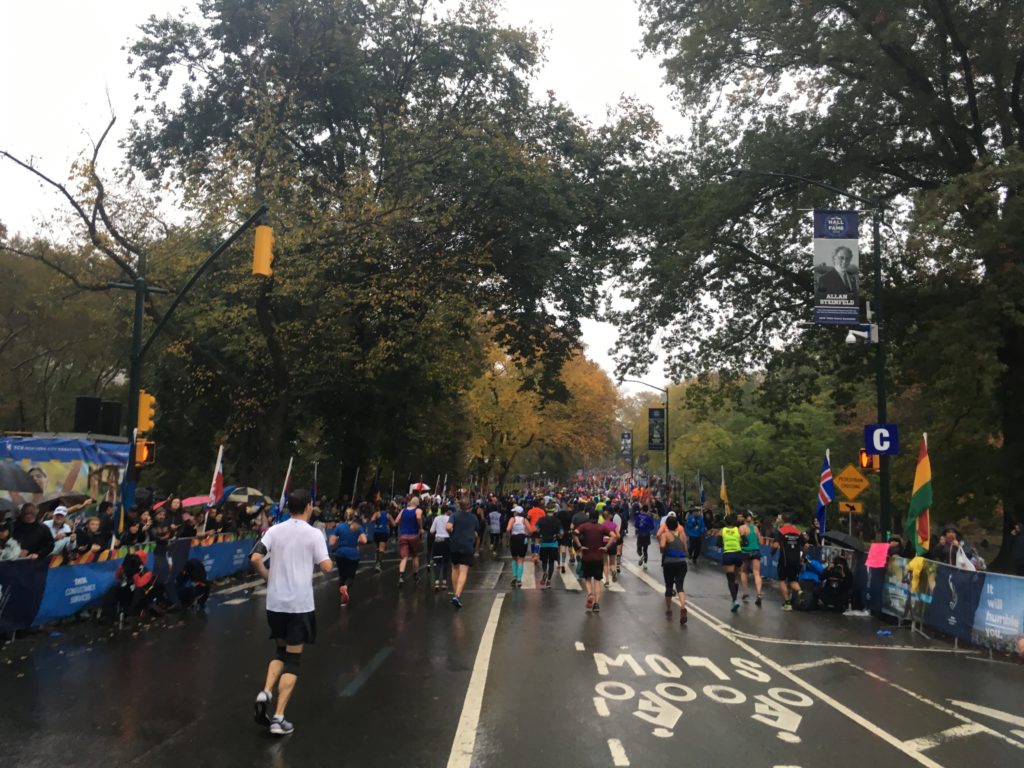
The final stretch of New York City Marathon in Central Park
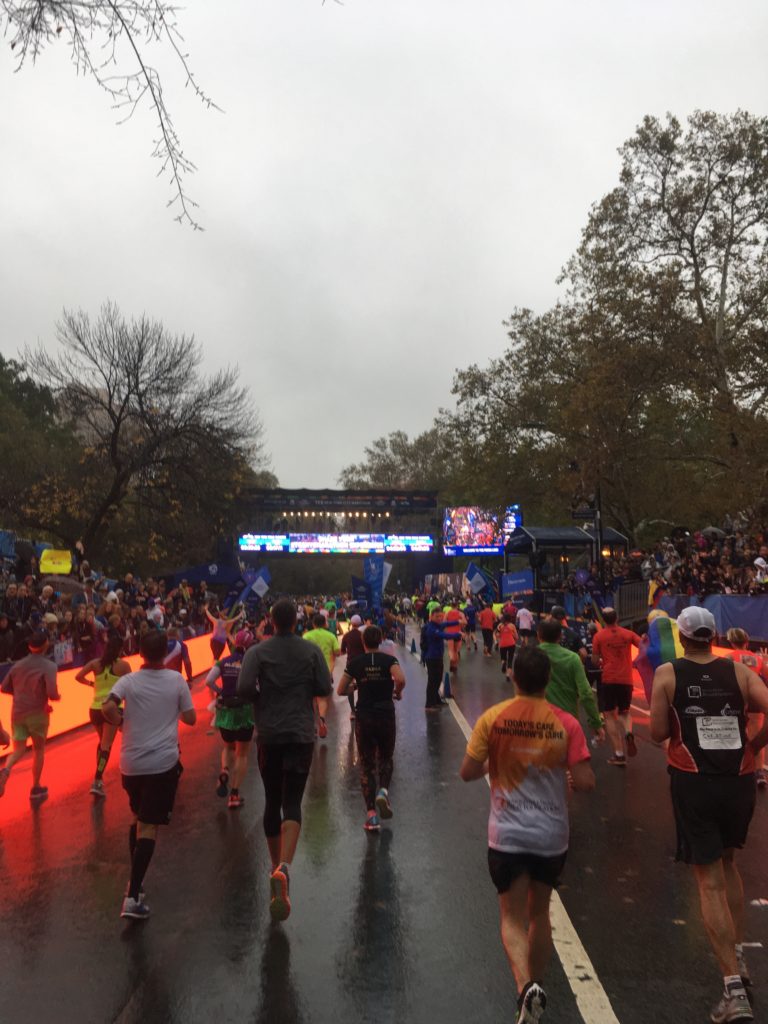
Post-Race
The finish line area of New York City Marathon is basically a very, very, very long walk until you exit Central Park. The volunteers give you your medal, a space blanket and a goodie bag with food.
At registration you have to decide whether you want to drop a bag before the race, or if you want a blue New York Road Runners Poncho. After the race runners with a drop bag had to continue on the right and up further north, whereas poncho runners take a left turn to get their poncho. We had chosen the poncho option and hat to walk at least a full kilometer until we got our poncho. By the time we got it we were completely soaked and cold. Bag drop runners had to walk even more.
Of course we then had to take the subway home, as it was impossible to get a taxi (no surprise). But unfortunately not all the lines were working due to construction works. So also plan ahead how you will get back home after the race.
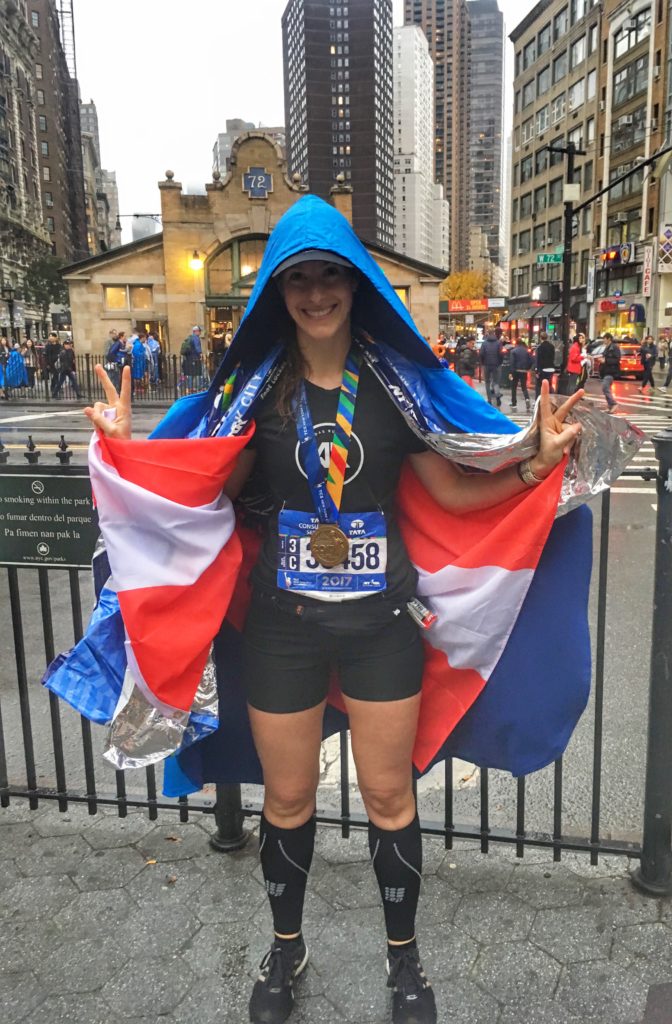
Me after the New York City Marathon
Sightseeing
New York City is of course famous for sightseeing. There are countless option of what you can do, from the Empire State Building, to the Statue of Liberty, to seeing a Broadway musical. So here are my personal highlights:
- Statue of Liberty and Ellis Island on a sunny day
- Watching the sunset and the Empire State Building from the Rockefeller Center
- The Guggenheim Museum and the Moma
- Going for a run in Central Park
- Exploring Chelsea, the Chelsea Market and the High Line Park
- Brooklyn Bridge, Brooklyn and Williamsburg
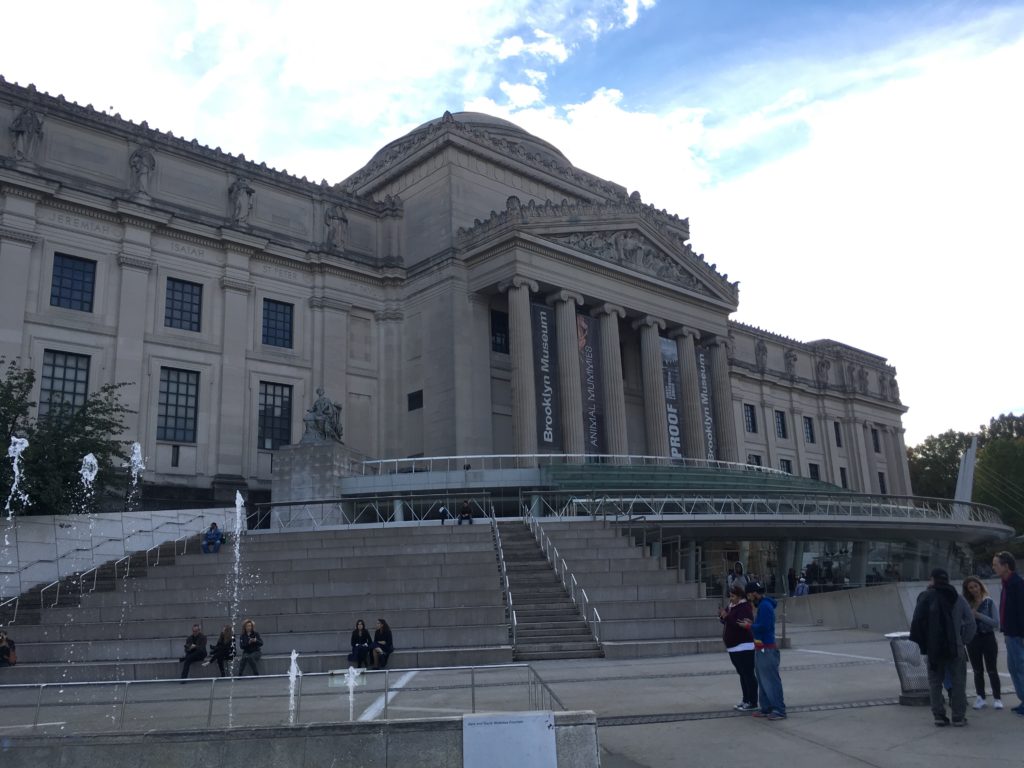
The Brooklyn Museum
Do you want to run a Marathon yourself? Check out my blog post on the best Marathon gear, pacing strategy and tips for your first Marathon.
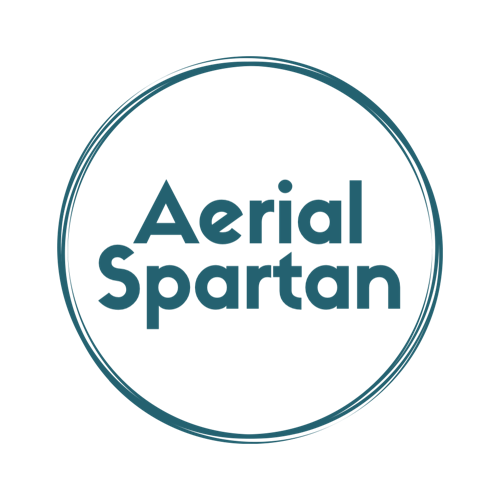
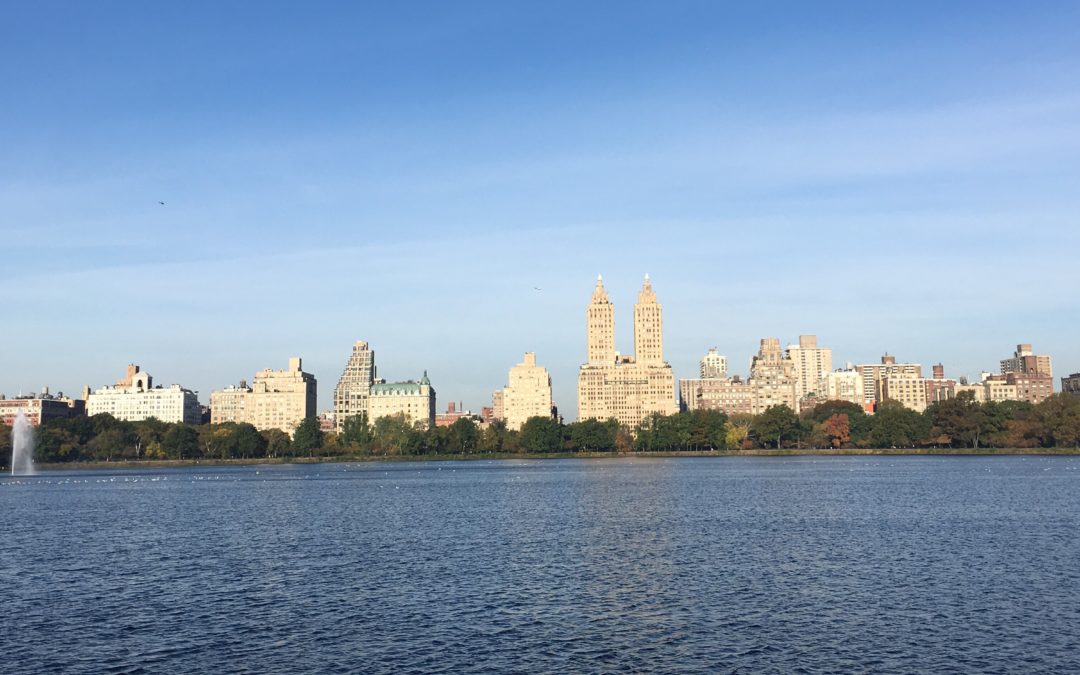

👍